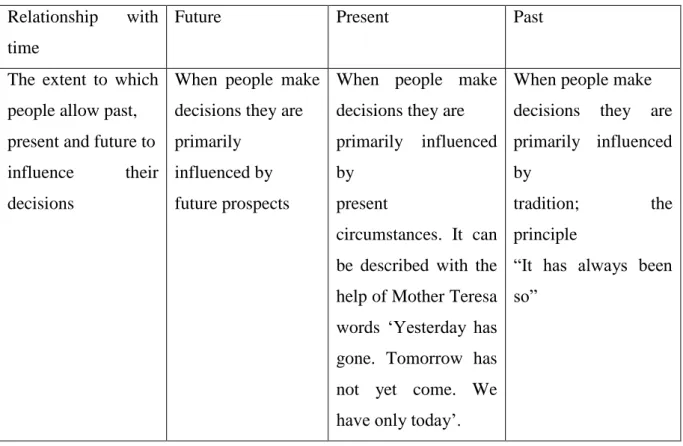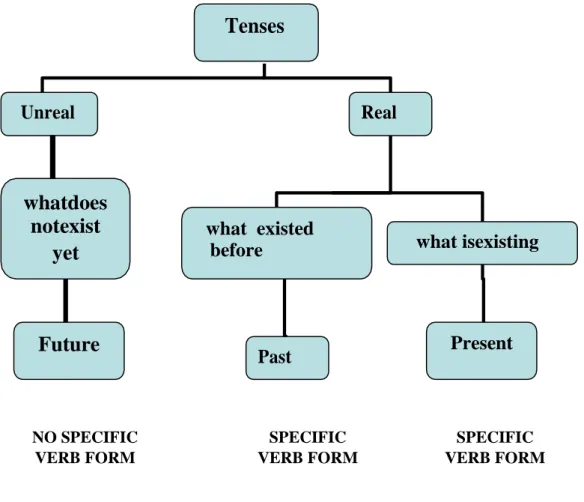In the modern world, the problem of time and its interpretations is becoming even more urgent. Are the expressions of time in the language similar/or different from those used in speech. To make matters worse, there is tension between Western and Arab scholars trying to gain insight into the nature of time.
Being an Arabic scholar who teaches English, I am compelled to come up with a description of the time that integrates Western and Arab perspectives. To analyze time as a concept, we will analyze definitions of time and collocations of time (including idioms). The subject of research is the linguistic features of time reflected in language and speech.
I did the following steps to make a comparative analysis of time in terms of the language: сcomparison of definitions of time in Arabic and English dictionaries;. It consists of introduction, two chapters, with the first one devoted to philosophical, cultural and linguistic aspects of time and the second one to the systematic linguistic and colloquial expressions of time, conclusion and a list of references.
TIME: ONTOLOGY AND HEURISTICS .............................8– 42
Western Philosophers
The concept of time is one of the most fundamental philosophical categories in Western philosophy. Heidegger then rejected both conceptions of time as based on the privileging of the "now" as vulgar and inauthentic. In his analysis of the nature of time, Aristotle describes time as a tool for measuring motion, while for Plato, time is an image of eternity.
Augustine argued that time is not a physical phenomenon, as it is connected to the life of the soul, and it is only through the souls that the meanings of time are communicated to the physical world. The problem of time has been one of the most important problems in the history of Islamic philosophy. He claims that the reality of time logically depends on motion in general, and the motion of the heavens in particular.
His conception of time reminds us of the repetition of time suggested by Islam, for example. Another important thinker was Al-Ghazali, who discussed the question of the existence of time before the creation of the universe. In relation to language, specifically the meaning of the verb, “it is useful to reformulate the threefold distinction of time.
Time is threefold: past, future and present, as it is the product of the movements of the universe. So there seems to be no one-to-one correspondence between the verb form and the time of the action, especially in the present tense. The category of time in a metaphysical sense has been given much attention by both Western and Arab philosophers, as it is one of the basic ontological problems of the world.
One of the most debated questions seems to have always been the problem of the finitude of time. Speech refers to the sounds that come out of our mouths and take shape in the form of words. (Hamanguchi, 1995). There are two types of time: relative and absolute, which are attributed to all movements of the universe.
But waiting can occupy a prominent place in Arab life, as it is useful in terms of waiting for the pleasant event. Mainly scholars of Islamic philosophy believed in the spiral nature of time and the fact that it was created by Allah.

Arabs Philosophers
Cross-Cultural Aspects of Time
- E.Hall and his Grammar of Culture
- Time orientation in F.Kluckhohn and F.Strodtbeck’s Values Orientation
There are several books presenting the application of Sapir-Whorf's groundbreaking theoretical work to a full comparative case study of 'time': Turkish-English Comparison (Binnick, 1991), Anglo-Arabic (J.O. Brien, 2013; Abdul-Hussein Kadhim Reishaan, 2012, SondesHamdi AL-Mukattash, 2012), American English Arabic within a context of Arab culture and American culture (E. Hall, 1954). In monochronic cultures, time is seen as an arrow (events are ordered according to the principle of the line "from A to B"), while polychrome cultures see it as a spiral (events are ordered according to the principle of A-B-C-A-B-C). Hall describes it this way: "If you value people, you have to listen to them and you can't cut them off just because of the schedule" (Hall; quoted after: Samovar, Porter.
As can be seen from the examples above, there is no clear geographical pattern that can link monochronic or polychronic perspective on time to a particular region of the world, as monochronic cultures can be found in Europe and Asia, for example. The periods through meals and through sleep and waking are probably the earliest of the observed temporal sets for children. Informally we can say "Oh, it takes years to get this done" or "I'll be back in a few minutes", and you need to be aware of the context to understand what "years/a few minutes" means .
Minutes, hours, months and weeks are also used in all three contexts.(ibid, 138) This division, although formulated differently, is very similar to the French philosopher's theory of the 1st half of the XXc. Bond describes this dimension as Confucian dynamism because most of the values at both ends of the scale reflect the teachings of Confucius” (Riahi-Belkaoui, 1995:79).
Grammatical Aspect :Tense and Time
- What is Tense?
- Tenses in English
- Tenses in Arabic
- Tenses Aspect and Mood in English and Arabic
Radford defined tense as a verb form that indicates the time of the action denoted by this form (Radford et al., 1999: 154). There are many definitions of time and time based on the tripartite division of the phenomenon and its deictic character. This interpretation of the three divisions of time into past, present and future is either at the level of reference or at the level of conceptual structure, which means that the level of analysis is outside the world of linguistic structures.
Quirk mentions, that at the level of linguistic analysis, the interpretation of the notion of time seems quite ambiguous since time is a relative category. For Lewis, the tense category involves a morphological change in the base form of the verb, or in an auxiliary verb. Here Quirk et al (ibid) view time as two divisions of past and future with the present moment hanging, minute by minute, between them.
Morphologically, "this triple opposition is reduced to two, since English has no future form of the verb in addition to the present and past forms" (Quirk et al. I think that one linguistic and cultural observation might be appropriate here: in Arabic, we do not have infinitives as the main and basic form of the verb. The verb form is in the past, which serves as the basic form and I think that the linguistic fact can be understood as a sign of a very specific, real context. -dependent knowledge of the Arabs.past) to indicate the past time of an action and the formula 'لعف' /feaele/ (= did) as a verb form.
His definition of verbs limits the verb to the past and future and he considers the present to be actually the future because it is imaginary, and once you get out of it, it moves within the framework of the past. He argues that this link is an aspect of the verb in its older stages and not a feature of Arabic. Aspect seems more important than time to Russians; the very form of the verb shows completeness, but makes no distinction between now and then.
Some of the scholars we have mentioned above (eg Russel) suggest that non-existent tenses are both past and future (See Figure 3. below). Therefore, the Arabic verb phrase can contain auxiliaries such as 'دق̓ , دق ناك' ' , 'ناك دق ̓ 'س ' ٫and ' فوس ̓ that form one unit ٫ with the present or past form of the verb to express clusters of actions in the past time or clusters of intentions in the future. For both Western and Arab philosophers, time is connected to space and has no meaning without the existence of the universe and events. The view of Arab philosophers.
Ancient and modern grammarians of English and Arabic define tense as the grammatical embodiment of physical time, which manifests itself linguistically through the form of the verb. In English, it is emphasized that the present is the most important point, because we cannot experience time from the perspective of the present moment.

TIME IN LANGUAGE AND IN SPEECH
Language & Speech
The Expression of Time in Language
- Definitions of Time
- Collocations of Time & Idioms of Time
The expressions of time in Speech
- Time in the expressions of politeness
- Time expressions on-line
